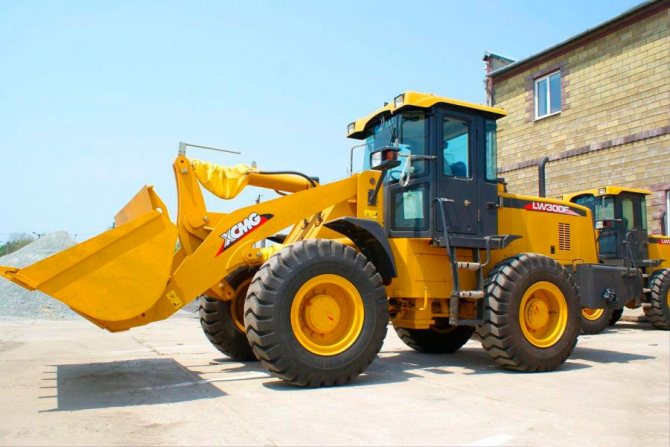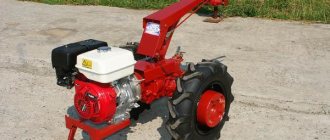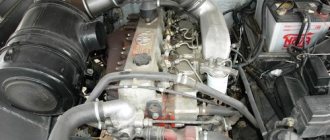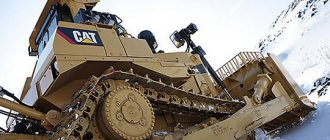08/30/2018 No views
As statistics show, the Russian forklift market is dominated by models with internal combustion engines, which are significantly larger than their counterparts that run on electricity. This equipment is operated in harsh conditions that require large resources. That is why one of the most important parameters to pay attention to is the fuel consumption of the forklift.
The cost of goods and work performed is directly calculated based on the fuel and lubricants used. The problem is that the fuel consumption of front loaders is much more difficult to determine than for a conventional vehicle, because for this equipment there is no defined standard for a range of 100 km.
Key Features
Fuel consumption, which in most cases is indicated by manufacturers, is as follows: number of grams / unit of power. That is why there is a rather strong discrepancy in the numbers, which creates even more confusion not only for the average person, but also for experienced drivers.
The fuel consumption indicated by the company that manufactures the equipment does not give any understanding of how much a particular engine will actually consume. It is not clear what the norm will be for an hour, a work shift or a whole month of operation. In this case, it is impossible to do without the use of certain theoretical knowledge and calculations.
Fuel consumption standards for a front loader in practice
Using the SEM 650B front loader as an example, we will look at how the official fuel consumption data differs from the real picture. First, let's calculate the fuel rate using the above formula. The loader engine has a power of 220 hp. – a loader with a lifting capacity of 5 tons. The engine power of this loader is 162 kW, the time for which we will calculate fuel consumption is 1 hour, the specific fuel consumption for this machine is 220 g/kWh, any load percentage can be taken, and the fuel density, as mentioned above, is constant – 850g/l.
As a result, it turns out that for 100% load the fuel consumption will be 42 l/h, for 75% load - 31.5 l/h, and for 60 and 50% - 25.2 l/h and 21 l/h, respectively.
This forklift fuel consumption can be submitted to the organization's accounting department, and the figure obtained through such calculations will be considered an official indicator and will supplement the fuel consumption accounting data. However, in practice the situation is different.
In reality, you will need significantly less fuel. Of course, sometimes the technological process requires the engine to operate at the highest speeds, however, as a rule, this practically never occurs in real work. The specific fuel consumption figure, designated G in the formula, is almost impossible to verify. Equipment sellers often do not know what tests are carried out at factories to obtain this indicator - they simply obtain the value and report it to the buyer. Meanwhile, factories conduct tests closer to extreme conditions that are rarely encountered in real life, so the performance may differ significantly.
Thus, if you hear from a seller a questionable value for specific fuel consumption, be sure to ask what the value is in practice. Very often, large companies that sell special equipment specifically collect data from customers who are already working with their equipment in order to navigate real fuel consumption indicators. If you contact such a company, they will explain to you what fuel consumption is required for a specific front loader model in accordance with the expected operating conditions and load.
One of the most important questions that any owner of this equipment faces. Sometimes the manufacturer clearly indicates fuel consumption per power unit (horsepower or kilowatts) in grams. You can find this information in the loader specifications table. However, for all its usefulness, it does not give a clear idea of how much fuel is required for operation.
How to calculate fuel consumption rate
The fuel consumption rate for forklifts is determined by the following formula:
Q = (N*q)/(1000*R*k), where
N is an indicator of the power of specific diesel engines, which is installed in a specific model for which the calculation is being carried out.
q is the nominal fuel consumption, which is specified in the relevant documentation for the engine.
R is an indicator of the density of the diesel fuel used. This parameter is known initially, according to the approved standard (840 kg/m3 for winter and 860 kg/m3 for summer). For convenience, the general indicator is set at 0.85 kg/dm3.
k is a certain coefficient that reflects the time period in percentage terms when the front loader was operated in normal mode and the amount of time when it was used at maximum crankshaft speed.

Write-off of diesel fuel by engine hours
Standards are taken based on actual consumption. For the winter period, it is necessary to plan to increase fuel consumption by 12-15%. The rights of the tax authorities in the dispute that the enterprise has overestimated these standards (and for vehicles) is that these expenses may be prohibited from being classified as expenses.
Advice just in case: An inexperienced tax specialist may unknowingly claim that the write-off of fuel and lubricants can be carried out only on the basis of TRAVEL SHEET ESTABLISHED IN THE OKUD FORM THIS IS 3, 4-C, 4-P.
Then from his statement the question arises: SHOULD YOU ALSO WRITE A WAYWAY FOR A CHAINSAW, AND FOR A DIESEL GENERATOR, COMPRESSOR, ETC.??? Regulatory and methodological document RD R3112194-0366-03 (Download PDF format 0.1 Mb) In this The guiding normative and methodological document contains the values of basic fuel consumption standards for general purpose automotive rolling stock, fuel consumption standards for the operation of special vehicles, the procedure for applying standards and methods for calculating normalized fuel consumption during operation, reference standards for lubricant consumption, values of winter allowances, etc. .The guidance document is intended for motor transport enterprises, organizations, entrepreneurs, etc., regardless of the form of ownership, operating automotive equipment and special rolling stock on vehicle chassis on the territory of the Russian Federation. The proposed standards can be used as a basis for calculating departmental standards for the operation of special and technological vehicles.
Practical nuances
From the above information we see that almost all parameters when determining the fuel consumption of a forklift are known in advance, which cannot be said about the last coefficient (k).
To understand the situation, consider two examples:
- The equipment works at the railway station, loading and unloading railway cars. The shift is about 8 hours without a break. Workers are located on a platform that is located higher than the level of the special equipment, so the front loader forks do not rise to the height of the maximum boom reach. Maximum rotation of the engine crankshaft occurs only when the operator presses the pedal all the way, covering the distance between two certain points.
- The warehouse is open 24 hours a day. During the entire working day, there are two arrivals of trucks, which are unloaded in a few hours using the available equipment. It is at these moments that peak engine loads occur, but the rest of the time the crankshaft speed decreases, because the units perform warehouse work inside the warehouse without excessive intensity.
If we compare these two situations, then in the first case, the coefficient will be higher. This parameter takes into account peak loads - acceleration, downhill movement and lifting, during which the greatest use of equipment resources occurs. The calculation of fuel consumption for a front loader is determined based on the duration of its operation at peak crankshaft speeds from the total operating time (shift).
Fuel consumption standards for a front loader in practice
Using the SEM 650B front loader as an example, we will look at how the official fuel consumption data differs from the real picture. First, let's calculate the fuel rate using the above formula. The loader engine has a power of 220 hp. — a loader with a lifting capacity of 5 tons. The engine power of this loader is 162 kW, the time for which we will calculate fuel consumption is 1 hour, the specific fuel consumption for this machine is 220 g/kWh, any load percentage can be taken, and the fuel density, as mentioned above, is constant — 850g/l.
As a result, it turns out that for 100% load the fuel consumption will be 42 l/h, for 75% load - 31.5 l/h, and for 60 and 50% - 25.2 l/h and 21 l/h, respectively.
This forklift fuel consumption can be submitted to the organization's accounting department, and the figure obtained through such calculations will be considered an official indicator and will supplement the fuel consumption accounting data. However, in practice the situation is different.
In reality, you will need significantly less fuel. Of course, sometimes the technological process requires the engine to operate at the highest speeds, however, as a rule, this practically never occurs in real work. The specific fuel consumption figure, designated G in the formula, is almost impossible to verify. Equipment sellers often do not know what tests are carried out at factories to obtain this indicator - they simply obtain the value and report it to the buyer. Meanwhile, factories conduct tests closer to extreme conditions that are rarely encountered in real life, so the performance may differ significantly.
Thus, if you hear from a seller a questionable value for specific fuel consumption, be sure to ask what the value is in practice. Very often, large companies that sell special equipment specifically collect data from customers who are already working with their equipment in order to navigate real fuel consumption indicators. If you contact such a company, they will explain to you what fuel consumption is required for a specific front loader model in accordance with the expected operating conditions and load.
The issue of diesel consumption is the most important one when purchasing special equipment with internal combustion engines.
Any device must initially be put on balance. In this case, the fuel is written off according to existing regulatory documents. However, for special equipment there are no clear indicators of consumption per 100 km. Manufacturers, on the contrary, set the consumption per unit of engine power.
To determine and accurately calculate the formula, you must clearly know all the necessary components:
- N is the engine power, measured in kW;
- t – fuel consumption time, that is, 1 hour;
- G – specific fuel consumption of the vehicle, g/kWh;
- % – percentage of machine load during operation;
- p – fuel density. For diesel, the density is constant and is 850 grams per liter.
Engine power is mainly determined in horsepower. In order to find out the power in kW, you need to look at the equipment documents from the manufacturer.
Specific fuel consumption is a measure of engine consumption information at specific loads. Such data cannot be found in documents about the equipment; they must be clarified upon purchase or from authorized dealers.
The main component in the calculation formula is the percentage of equipment load. It refers to information about the operation of the internal combustion engine at maximum speed. The percentage is indicated by the manufacturer for each type of transport. For example, for some MTZ-based loaders, out of all 100% of the working time, the engine will work approximately 30% at maximum speed.
Let's return to specific consumption. It is expressed in relation to the fuel consumed per 1 unit of power. Thus, to calculate everything in theory, for the maximum value you need to use the formula Q=N*q. Where Q is the desired indicator of fuel consumption for 1 hour of operation, q is the specific fuel consumption and N is the power of the unit.
For example, there is data on the engine power in kW: N = 75, q = 265. In one hour of operation, such a unit will consume almost 20 kg of diesel fuel. With this calculation, it is worth remembering that the unit will not operate directly at maximum speed the entire time. Also, the calculation is carried out in liters, so in order not to translate everything according to tables and not make mistakes in the following calculations, it is necessary to use the improved calculation formula Q = Nq/(1000*R*k1).
In this formula, the desired result Q determines the fuel consumption in liters per hour of operation. k1 – is a coefficient indicating engine operation at maximum crankshaft speed. R is a constant value corresponding to the fuel density. The rest of the indicators remain the same.
The maximum engine performance factor is 2.3. Calculated using the formula 70% normal operation / 30% operation at high speeds.
It is worth remembering that in practice, theoretical costs are always higher, since the engine operates at maximum speed only part of the time.










